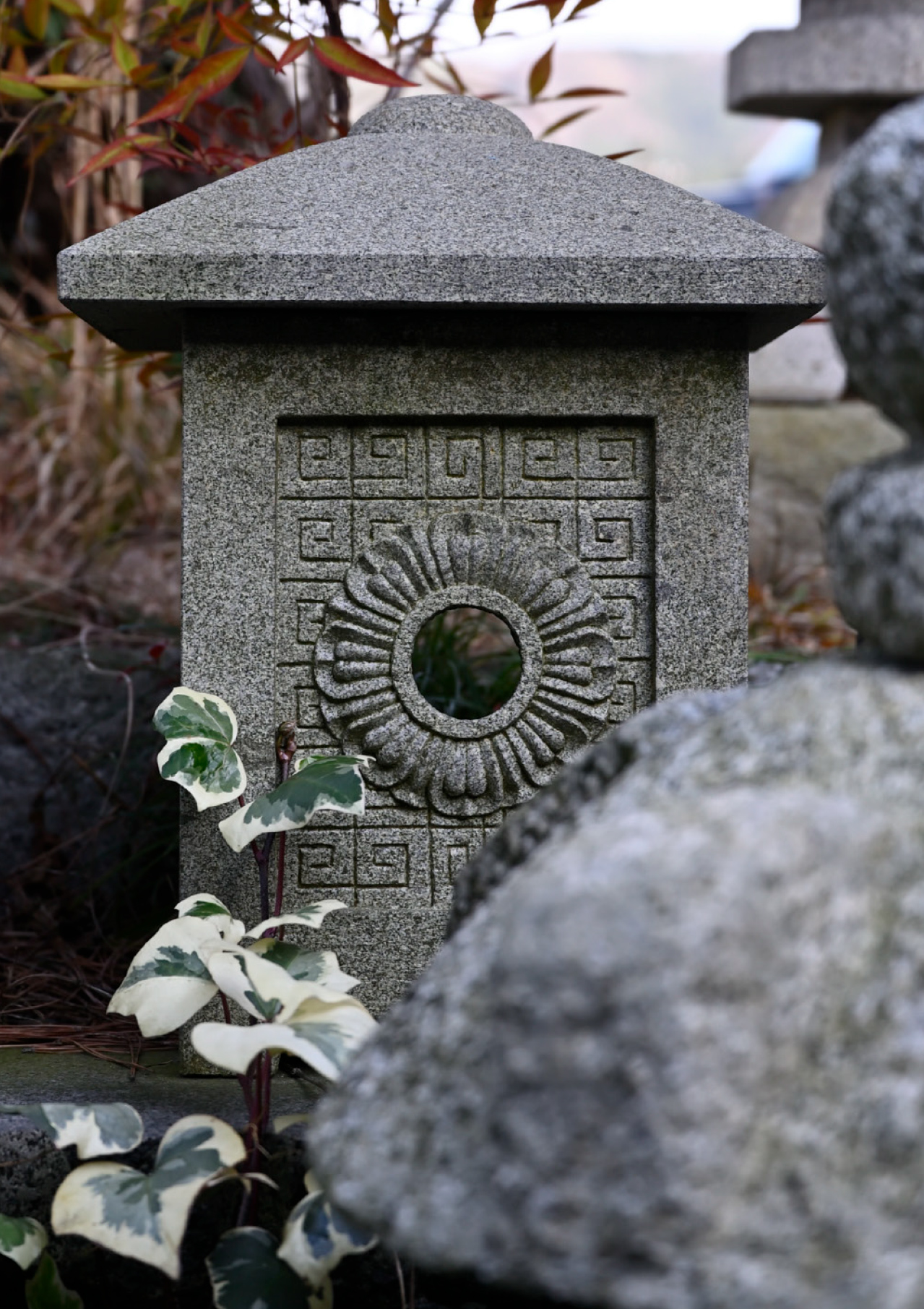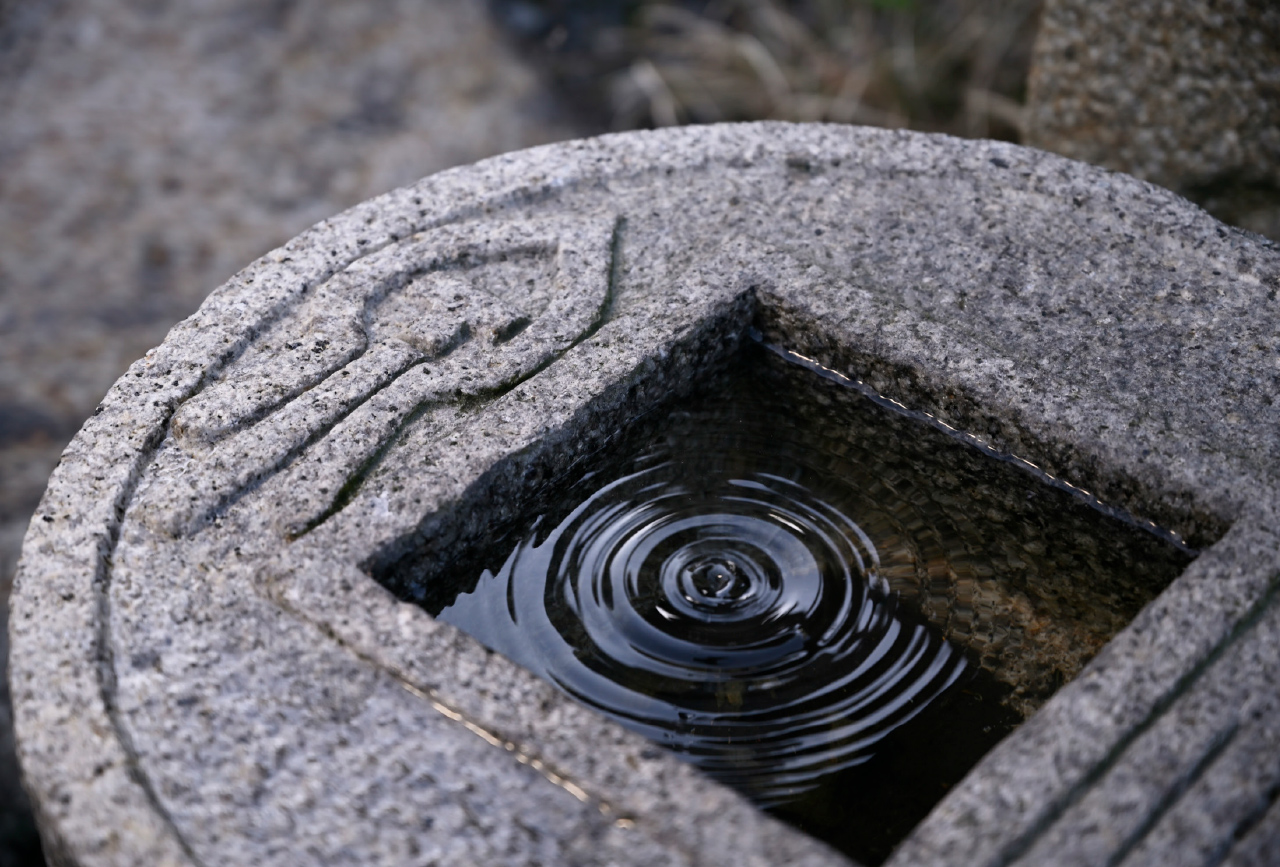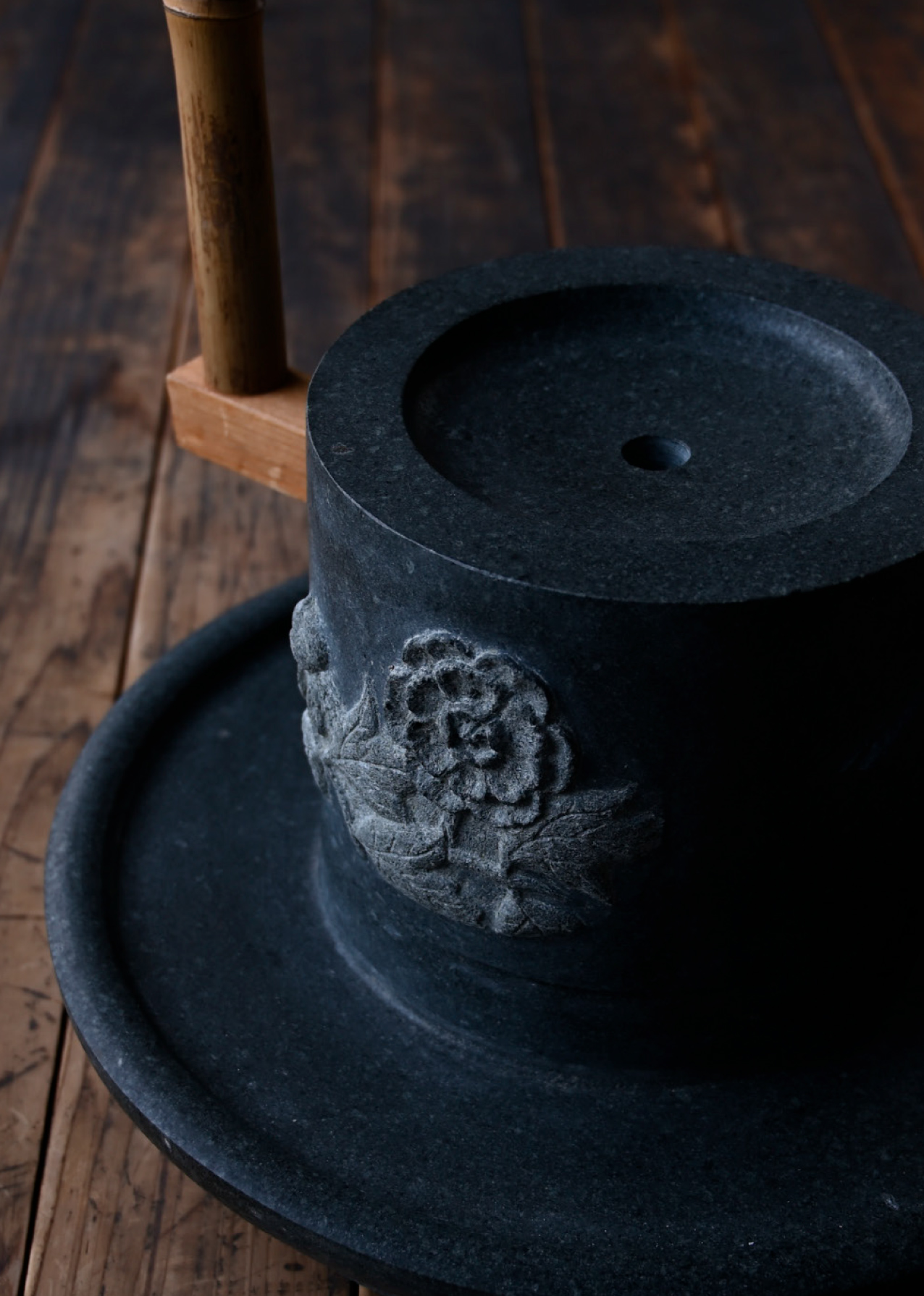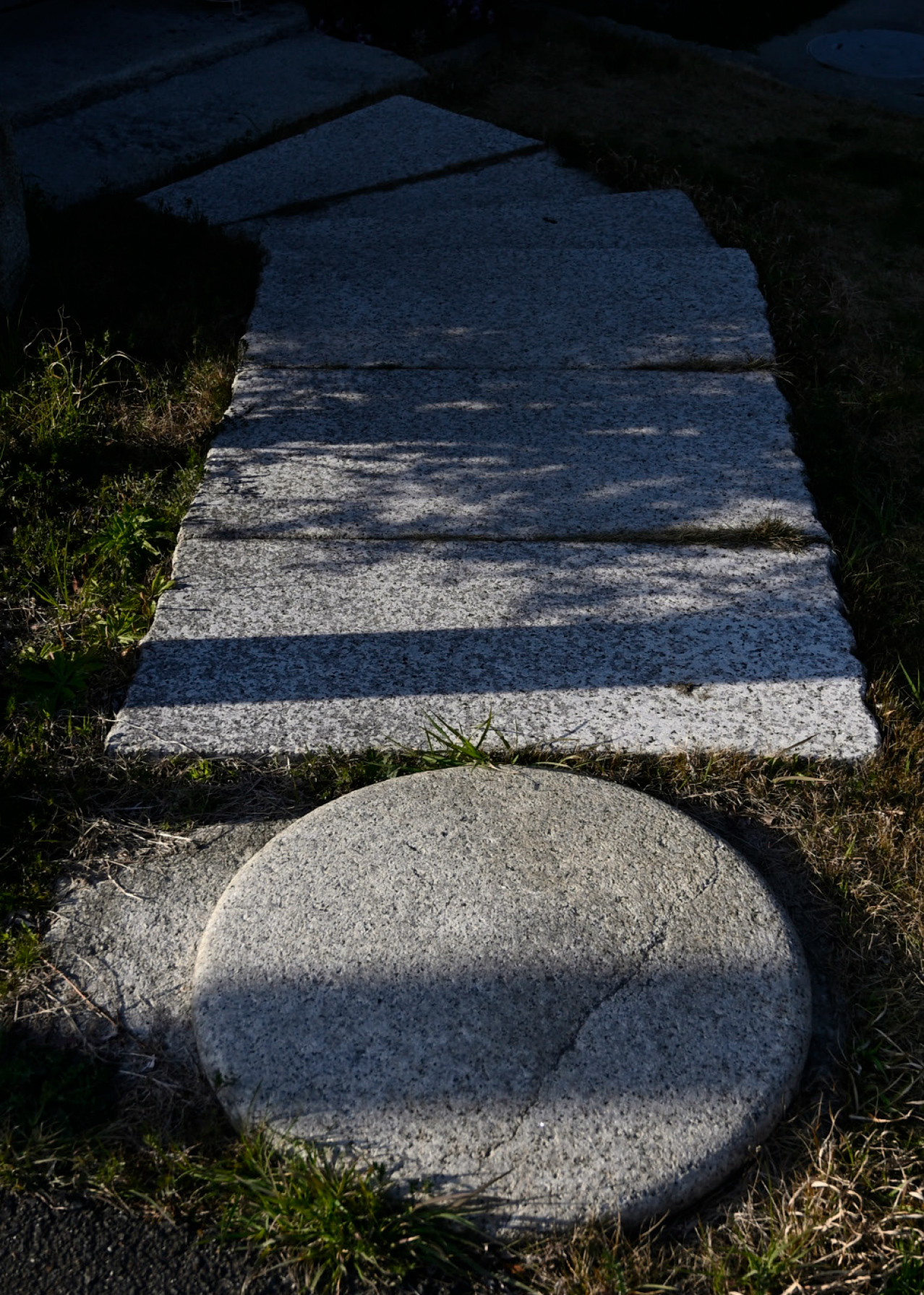京石工芸品 京都府石材業協同組合
KYO-ISHIKOUGEISTONE CRAFTS 1
1
- 灯籠。石工が使う道具は、1000年以上変わらない。
京都における石工芸は、平安京遷都(794年)の際、大内裏の造営を機に大きく発展しました。その後は他の工芸同様、仏教の隆盛とともに技術が発達し、16世紀に興った茶の湯文化の流行とともに洗練されていきます。当時の茶人は、古くから仏教寺院で用いられてきた石灯籠や石塔などに「わび」の美を見出し、遺品を入手、あるいは石工に模作を命じて自らの茶庭に据え、これを愛でたのです。こうした美意識は現代の茶の湯にも引き継がれ、「侘び」「寂び」「禅」といったキーワードを愛する国内外の趣味人の暮らしをも彩っています。また、茶葉を挽いて抹茶をつくる石臼は、抹茶の世界的な人気とともに、注目が集まる石工芸品といえるでしょう。
When the capital moved from Nara to Kyoto at the beginning of the Heian era (794), stone craftmanship rapidly developed along with the construction of the new Imperial Palace. Techniques continued to progress with the rise of Buddhism and were further refined with the emergence of tea ceremony culture in the 16th century. Tea masters in that era found the beauty of wabi in the old stone lanterns and towers they discovered in Buddhist temples. They acquired the relics outright or else ordered masons to create imitations to place in their tea gardens. This traditional aesthetic is preserved in the tea ceremony, and Wabi-sabi and Zen cultures continue to inspire devotees both in Japan and overseas. The worldwide popularity of matcha has also brought attention to the traditionally crafted stone mills used to grind the tea leaves.
 2
2
 3
3
 4
4
- : 蹲の湯桶石。茶会の際、茶室に入る前にここでて手と口中を清める。
- : 茶臼。中心の穴に茶葉を入れて回すと、粉砕された抹茶が下の皿の部分に落ちる仕組み。
- : 庭の敷石。新たにつくられるものもあるが、建物や橋などの礎石として使われていた古いものも珍重される。
(1,2,3,4 すべて齋田石材店)
1: Lantern. The tools used by masons have not changed for over 1000 years. 2: Boiled tub stone. At the tea ceremony hands and mouth are purified here before entering the tea room. 3: Tea mill. When tea leaves are put in the center hole and turned, the crushed matcha drops onto the plate below. 4: Paving stones in the garden. Some are newly made, but old ones are used as the cornerstones of buildings and bridges. (1,2,3,4 Saida Sekizai-ten)

